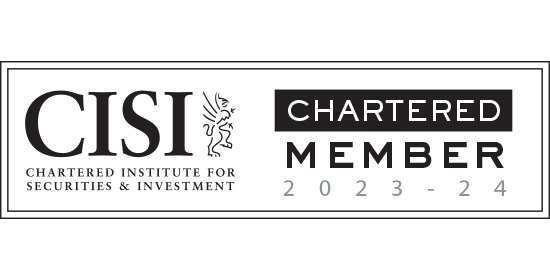Home country bias happens when investors are over-exposed to domestic equities in their investment portfolio.
Home country bias refers to investors’ tendency to favor companies from their own country over those from other countries or regions. The tendency to invest in our own backyard is not unusual or surprising; it is a worldwide phenomenon, and certainly not unique to investors in particular countries.
Home bias is equally strong in countries that are decidedly not among the world’s strongest economies. It is just as present in emerging market nations as in developed countries, and within developed countries, it is just as present in countries like Norway or Sweden, which are not particularly considered to be economic powerhouses.
Where we live has a big influence on our everyday lives—from the foods we like, to the sports teams we cheer for, we tend to prefer what’s nearby. It’s the same with our investments.
Home bias is a significant factor in equity investing because it affects how well-diversified an investor’s stock portfolio is. Investments in foreign equities offer an easy means of further diversifying your investment portfolio.
Foreign equities may also offer extra risk protection against the systemic risk inherent solely in one’s own country – in other words, the risk that an economic and/or financial market downturn may occur that is specific and limited to your home country and unlikely to significantly affect either the economies or financial markets of other countries.
Country-specific systematic risk factors such as political risk or poor corporate governance practices in the investor’s home market are important considerations. They can be difficult to quantify, but because they have the potential to add significant risk to a portfolio with a high exposure to domestic securities, they should be incorporated into the decision process.
When selecting an investment portfolio, the starting point is understanding your risk tolerance and future objectives. Thought should be given not only to the underlying holdings that make up the asset allocation but also geographical diversification, ie holding securities from different regions. This is because you do not want all, or even most of your money in a single country or region, for the same reason you don’t want it all in a single stock.

Diversification has long been a tool to reduce overall risks on investments and boost long-term returns. However, it is often the case that we can become too focussed on our home country.
Investors from or residing in the UK have long been known to exhibit a strong “home bias” This often stems from the familiarity of investing with locally listed companies. But it overlooks the fact that most of the products we use every day are from companies right across the globe.
Home bias can also prove costly for investors because it may, in fact, carry hidden risks. Single-nation markets lack the diversification of a global counterpart and the UK market, in particular, suffers from a high level of concentration. In the UK, over 50% of the FTSE All-Share Index comes from just three sectors – financials, consumer goods and oil and gas.
That represents a huge concentration of risk. And for those who also hold situs property and other investments in the UK this makes the overall UK concentration risk even greater.
Investing internationally can seem counterintuitive because it is natural to favour the familiar. For example, it can be comforting to recognise brands or company names when considering the top-10 holdings that funds publish and unsettling to find they are all foreign.
But where investors are over exposed to their home country this can cause two things to happen:
Firstly, that when that particular country or geographical area has a difficult time, their investments there will struggle. Secondly, that they miss out on the potential for growth that comes with owning assets in other parts of the world.
If we consider the UK’s position in the global economy: The MSCI World Index – formerly Morgan Stanley Capital International – is probably the most widely-recognised benchmark of developed economies’ stock markets.
While it is no surprise to find American shares comprise 61% of the MSCI, it is interesting to note that the UK comes third with just 6% of the total.
So rather than focussing too much on your home country it is better to aim for a globally diversified investment solution that targets a stock-bond mix, or asset allocation, designed to maximise expected return for a given level of risk.
A long-term, strategic approach to asset allocation, involving spreading investments across many securities, asset groups and countries to help manage overall risk. By diversifying globally, you are more likely to achieve a more consistent outcome by increasing the investment universe.
To put this into perspective the United Kingdom IMI (investable market index) provides access to one country and 365 stocks. However, the global investable market index provides access to circa 47 countries and 8,653 stocks. Providing infinitely greater diversification. And it is ultimately diversification that helps minimise risk.
Just like holding too much of one stock or having too much exposure to one industry can increase the volatility and risk within a portfolio, so too can being too heavily weighted to one country.
If you think your portfolio is too heavily weighted to your home country and would like to look at increasing diversification, you can contact me here
Find out how we can help you
If you would like to understand more about this topic get in touch
Related posts
 Published On: August 22, 2024|1.4 min read|
Published On: August 22, 2024|1.4 min read|Investing in Stocks Versus Hoarding in Savings? It’s All About the Equity Risk Premium (ERP)
Have you ever wondered why investing in the stock market can yield higher returns than just keeping your money in a savings account or fixed-term deposit? The answer lies in the Equity Risk Premium (ERP).
Read more
 Published On: August 18, 2024|1.2 min read|
Published On: August 18, 2024|1.2 min read|Inflation Made Real with Beers and Burgers
From 1990 to 2023, the price of a pint of beer in the UK has risen from £1.22 to £4.45, and a Big Mac from £1.40 to £3.69. A clear illustration of how inflation eats into our finances.
Read more
 Published On: August 12, 2024|0.9 min read|
Published On: August 12, 2024|0.9 min read|The “Wall of Worry” Timeline
This "Wall of Worry" timeline highlights major global crises from the past three decades. As investors, we often find ourselves concerned about the constant barrage of negative world events.
Read more









